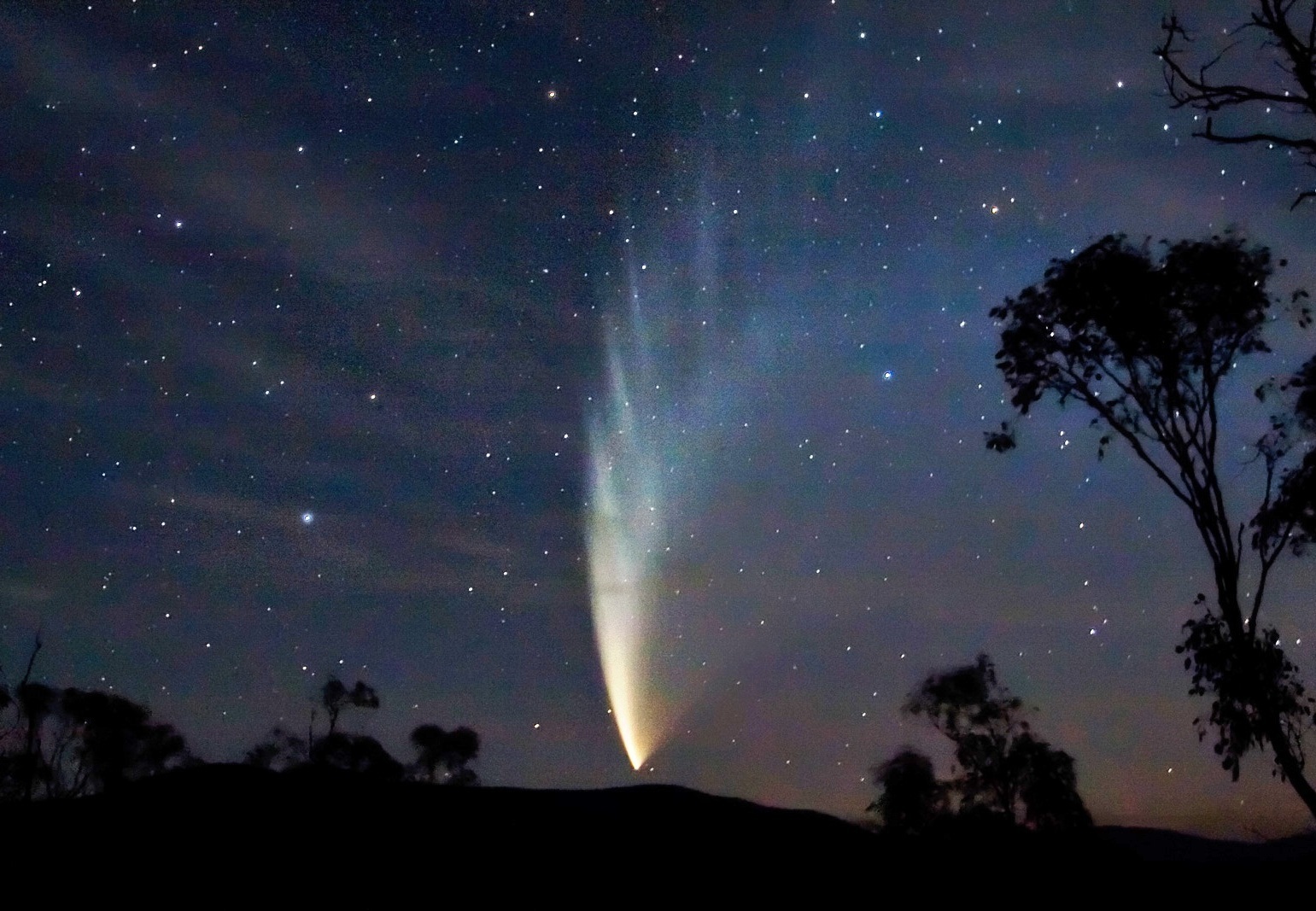Several explanations have been presented in light of our present-day knowledge of astronomy. One idea is that the "star" could have been an alignment of Jupiter with Saturn and/or Mars, which would create a transient star-looking object. Since planets at this time were thought of as "wandering stars," it's possible that as they moved, they would appear to guide the wise men on their journey. A nova or a supernova is another candidate, since it would appear like a bright star and then eventually fade away.
 |
| A comet may seem to "point" at a specific location |
Since we know the approximate date range of Jesus's birth (somewhere between 4-7BC), the location of his birth (Bethlehem), and where the magi were coming from (from east of Bethlehem), some of these suggestions can actually be cross-checked with observations that were recorded at the time. For example, one suggestion is that the celestial object was actually a comet rather than a star. A comet with the appropriate orientation was indeed observed by Chinese astronomers in 5BC -- although comets are not particularly rare, and they were actually considered bad omens at the time, making it unlikely that the magi would have followed this one.
One of the cool things about astronomy is that it's such an old field, and people have been making observations for millennia. Although we may never know the exact truth behind the magi's star, I still think it's awesome that we can think about it in astronomical terms, both theoretically, and in light of 2000-year-old observations.
 |
| Sincere apologies for writing this post way before the Christmas season |
Sources:
This is great —(long dash appropriate here?) using modern-day understanding of astronomy to critically assess the claims of ancient texts. I wonder what people will say 2000 years from now looking at our scientific literature in astronomy!
ReplyDelete5